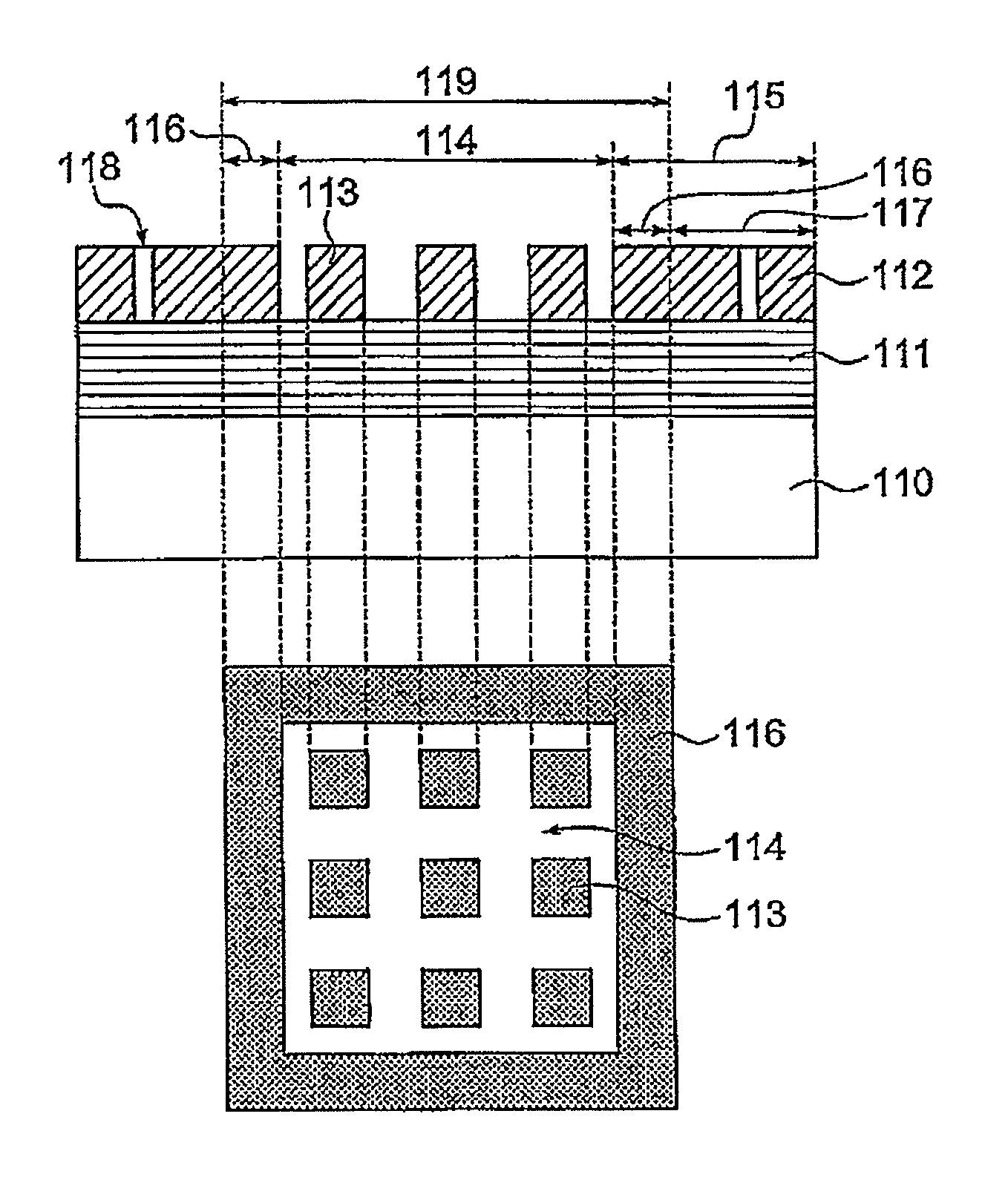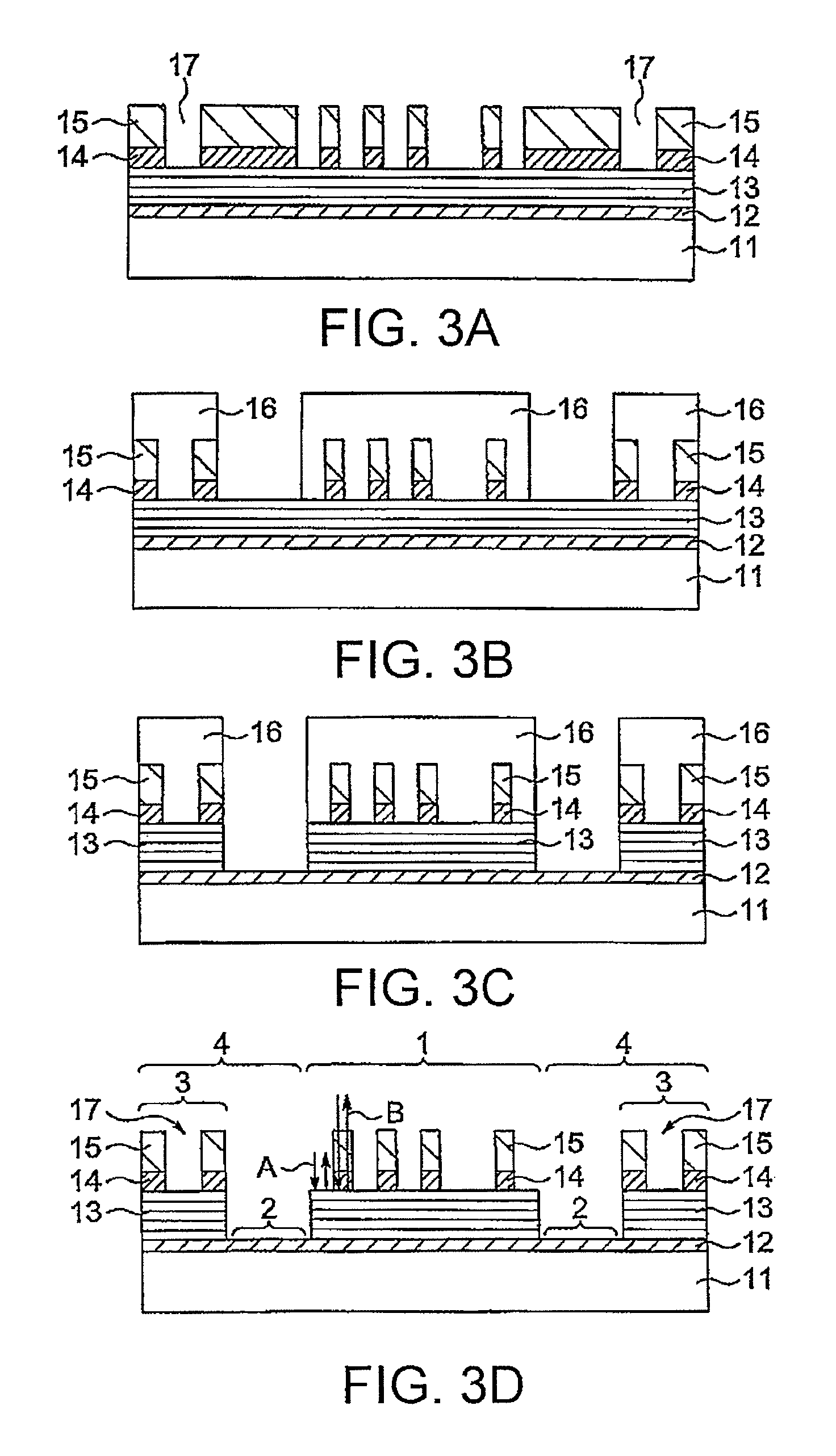Reflective mask, reflective mask blank and method of manufacturing reflective mask
a technology of reflective mask and mask blank, which is applied in the field of reflective mask blank and reflective mask, can solve the problems that the lithography technique using halftone mask is not easily applied as futuristic, and achieve the effects of reducing conductivity, reducing sensitization of resist film, and easy grounding
- Summary
- Abstract
- Description
- Claims
- Application Information
AI Technical Summary
Benefits of technology
Problems solved by technology
Method used
Image
Examples
example 1
[0085]First, as a substrate, there was prepared a low-expansion SiO2—TiO2-based glass substrate having an external shape of 152 mm square with a thickness of 6.3 mm. Then, chromium nitride (CrN: N=10 at %) was coated on the substrate by DC magnetron sputtering, thereby forming a conductive film having a thickness of 5 nm. Then, Mo and Si suitable as reflective films in the region of an exposure wavelength 13 to 14 nm being a wavelength of EUV light were coated on the conductive film by ion beam sputtering, thereby forming a multilayer reflective film having a total thickness of 284 nm (Mo:2.8 nm, Si:4.2 nm, given that this forms one cycle, Si and Mo films were laminated by 40 cycles and, finally, a Si film was formed to 4 nm thick).
[0086]Then, chromium nitride (CrN: N=10 at %) was coated on the multilayer reflective film by DC magnetron sputtering, thereby forming a buffer film having a thickness of 10 nm. Then, TaN was coated on the buffer film by DC magnetron sputtering, thereby f...
example 2
[0093]First, as a substrate, there was prepared a low-expansion SiO2—TiO2-based glass substrate having an external shape of 152 mm square with a thickness of 6.3 mm. Then, chromium nitride (CrN: N=10 at %) was coated on the substrate by DC magnetron sputtering, thereby forming a conductive film having a thickness of 5 nm. Then, Mo and Si suitable as reflective films in the region of an exposure wavelength 13 to 14 nm being a wavelength of EUV light were coated on the conductive film by ion beam sputtering, thereby forming a multilayer reflective film having a total thickness of 284 nm (Mo:2.8 nm, Si:4.2 nm, given that this forms one cycle, Si and Mo films were laminated by 40 cycles and, finally, a Si film was formed to 4 nm thick).
[0094]Then, chromium nitride (CrN: N=10 at %) was coated on the multilayer reflective film by DC magnetron sputtering, thereby forming a buffer film having a thickness of 10 nm. Then, TaBN was coated on the buffer film by DC magnetron sputtering, thereby ...
example 3
[0101]First, as a substrate, there was prepared a low-expansion SiO2—TiO2-based glass substrate having an external shape of 152 mm square with a thickness of 6.3 mm. Then, Mo and Si suitable as reflective films in the region of an exposure wavelength 13 to 14 nm being a wavelength of EUV light were coated on the substrate by ion beam sputtering, thereby forming a multilayer reflective film having a total thickness of 284 nm (Mo:2.8 nm, Si:4.2 nm, given that this forms one cycle, Si and Mo films were laminated by 40 cycles and, finally, a Si film was formed to 4 nm thick).
[0102]Then, chromium nitride (CrN: N=10 at %) was coated on the multilayer reflective film by DC magnetron sputtering, thereby forming a buffer film having a thickness of 10 nm. Then, TaN was coated on the buffer film by DC magnetron sputtering, thereby forming a semitransmissive film having a thickness of 28 nm. In this event, the film formation was carried out using a tantalum target and using an Ar gas added with...
PUM
| Property | Measurement | Unit |
|---|---|---|
| wavelength | aaaaa | aaaaa |
| transmittance | aaaaa | aaaaa |
| wavelength | aaaaa | aaaaa |
Abstract
Description
Claims
Application Information
 Login to View More
Login to View More - R&D
- Intellectual Property
- Life Sciences
- Materials
- Tech Scout
- Unparalleled Data Quality
- Higher Quality Content
- 60% Fewer Hallucinations
Browse by: Latest US Patents, China's latest patents, Technical Efficacy Thesaurus, Application Domain, Technology Topic, Popular Technical Reports.
© 2025 PatSnap. All rights reserved.Legal|Privacy policy|Modern Slavery Act Transparency Statement|Sitemap|About US| Contact US: help@patsnap.com



